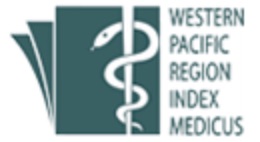The Impacts of Climate Variability on Cholera Cases in Malaysia
DOI:
https://doi.org/10.31436/imjm.v19i1.1335Abstract
Introduction: Altered weather patterns and changes in precipitation, temperature and humidity resulting from climate change could affect the distribution and incidence of cholera. This study is to quantify climate-induced increase in morbidity rates of cholera. Material and Methods: Monthly cholera cases and monthly temperature, precipitation, and relative humidity data from 2004 to 2014 were obtained from the Malaysian Ministry of Health and Malaysian Meteorological Department, respectively. Poisson generalized linear models were developed to quantify the relationship between meteorological parameters and the number of reported cholera cases. Results: The findings revealed that the total number of cholera cases in Malaysia during the 11 year study period was 3841 cases with 32 deaths. Out of these, 45.1% of the cases were among children below 12 years old and 75% of the cases were from Sabah. Temperature and precipitation gave significant impact on the cholera cases in Sabah, (p<0.001) while precipitation were significant in Terengganu (p<0.001), and Sarawak (p=0.013). Monthly lag temperature data at Lag 0, 1, and 2 months were associated with the cholera cases in Sabah (p<0.001). The change in odds of having cholera cases were by the factor of 3.5 for every 1ºC increase in temperature. However, the contribution of rainfall was very mild, whereby an increase of 1 mm in precipitation will increase the excess risk of cholera by up to 0.8%. Conclusion: This study concludes that climate does influence the number of cholera cases in Malaysia.
Downloads
Downloads
Published
How to Cite
Issue
Section
License
All material submitted for publication is assumed to be submitted exclusively to the IIUM Medical Journal Malaysia (IMJM) unless the contrary is stated. Manuscript decisions are based on a double-blinded peer review process. The Editor retains the right to determine the style and if necessary, edit and shorten any material accepted for publication.
IMJM retain copyright to all the articles published in the journal. All final ‘proof’ submissions must be accompanied by a completed Copyright Assignment Form, duly signed by all authors. The author(s) or copyright owner(s) irrevocably grant(s) to any third party, in advance and in perpetuity, the right to use, reproduce or disseminate the research article in its entirety or in part, in any format or medium, provided that no substantive errors are introduced in the process, proper attribution of authorship and correct citation details are given, and that the bibliographic details are not changed. If the article is reproduced or disseminated in part, this must be clearly and unequivocally indicated.










